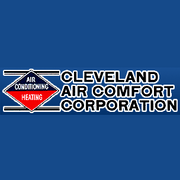A Brief Guide to Indoor Air Quality

The quality of outdoor air across the globe has been a topic of concern among environmentalists for decades. But in your own home, unhealthy air can be even more disturbing. If you’re tired of experiencing respiratory issues and high utility bills, you may need an indoor air quality check. To learn more, consider this guide.
What Are the Main Causes of Poor Indoor Air Quality?
There are two main factors that contribute to poor indoor air quality: the pollutants that enter your home from outdoors, and the lack of ventilation inside your living space. Every time you open a window to let in a breeze or open a door to enter and exit your home, you let in contaminants. These include outdoor allergens like pollen and dirt, as well as chemical pollutants like pesticides used in landscaping, and smoke from factories or vehicle traffic.
If your home doesn’t have adequate ventilation, all the pollutants that are generated indoors will be trapped. For example, you may create smoke in your home from tobacco products, or from cooking grease on the stovetop. Your pets will shed dead skin or dander, which will collect in furniture and carpets. There may also be air contaminants in the house itself, such as asbestos, lead, or radon. Even the products you use to clean your home, like bleach and ammonia, will float around your breathing supply.
How Can You Improve It?
 To improve your indoor air quality, you’ll need to filter out the contaminants already in your home and prevent additional ones from coming in. Start by increasing the frequency at which you change your HVAC filter. This screen collects dust, pollen, and dander particles, and must be washed or replaced every one to three months. If you leave it for too long, these particles may be re-circulated throughout your home.
To improve your indoor air quality, you’ll need to filter out the contaminants already in your home and prevent additional ones from coming in. Start by increasing the frequency at which you change your HVAC filter. This screen collects dust, pollen, and dander particles, and must be washed or replaced every one to three months. If you leave it for too long, these particles may be re-circulated throughout your home.
If your air filter can’t keep up with the contaminants, you may need to supplement your HVAC system with an air purifier. This draws in treated air and uses a special High Efficiency Particulate Air (HEPA) screen to filter out fine particles like smoke. To further limit the poor-quality air in your home, use an exhaust hood over your oven when cooking, and turn on the bathroom fan after using the shower.
For a comprehensive assessment of airborne contaminants, you can schedule an indoor air quality check. This may help you identify exactly which chemicals or particles are polluting your breathing supply. For example, if pollutants are gathering in your attic, you may need to install additional roof ventilation. Or, if there is lead, asbestos, or radon present, you’ll need the affected appliances or surfaces replaced.
If you're tired of breathing in poor-quality air, turn to Cleveland Air Comfort Corp. of Solon, OH. They have over 65 years of experience working for residential and commercial clients, and they will gladly perform an indoor air quality check for your property. With their help, you can filter out contaminants and enjoy a healthier living or workspace. For more information on their 24/7 services, visit the website or call (440) 232-1861 to schedule an appointment.
About the Business
Have a question? Ask the experts!
Send your question

